What is a Walkinshaw: Rare car key to Rachelle Childs’ murder case explained
Before Rachelle Childs was brutally murdered, the car lover was bragging about getting to drive a rare Walkinshaw Holden Commodore. See why it's so revered and listen to the latest podcast episode.
Dear Rachelle
Don't miss out on the headlines from Dear Rachelle. Followed categories will be added to My News.
The rare “Walkinshaw” Holden central to the Dear Rachelle podcast is instantly recognisable to muscle car fans as the first in a long line of “HSV” Commodores.
But what is its genesis and why is it so revered?
What is a Walkinshaw?
The Walkinshaw, or “Walky” is an iconic Australian muscle car.
In 1987, it was the ultimate Holden Commodore, the star of magazine covers and posters tacked to the walls of countless bedrooms, garages and workshops around the nation.
Officially known as the HSV VL SS Group A, it is a rare, collectable and instantly recognisable machine that holds a special place in the history of Australian vehicle manufacturing, as it was the first in a long line of Holden Special Vehicles machines.
WATCH: SEE THE FIRST WALKINSHAW EVER MADE IN THE PLAYER WINDOW ABOVE
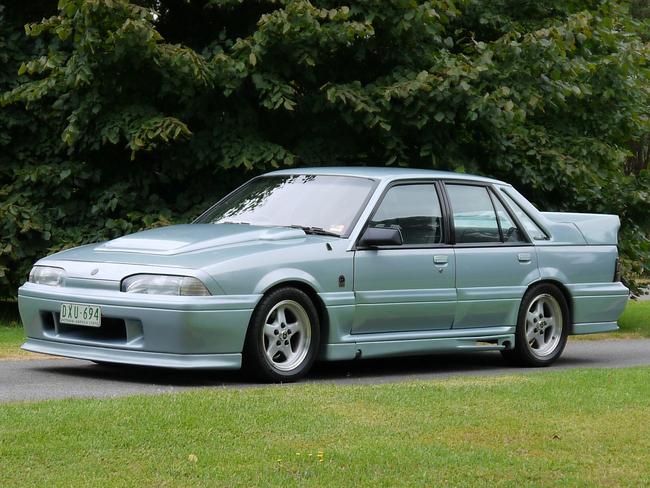
How instrumental was Holden poster boy Peter Brock in bringing the model to life?
Back in 1987, Peter Brock was the undisputed “King of the Mountain” following dominant victories with Holden in the Bathurst 1000 race at Mount Panorama.
Brock cashed in on his fame with rare and expensive “Holden Dealer Team” road cars built with Holden’s blessing until he put a mysterious box into his cars.
Known as the “Peter Brock Energy Polarizer”, the device was said to reduce vibration by aligning molecules in a car’s structure.
Brock defended it at the time, saying that “there’s never been any truly avant garde invention that hasn’t received derision”.
“I know I’m on the right track and I know I have something that works very well.”
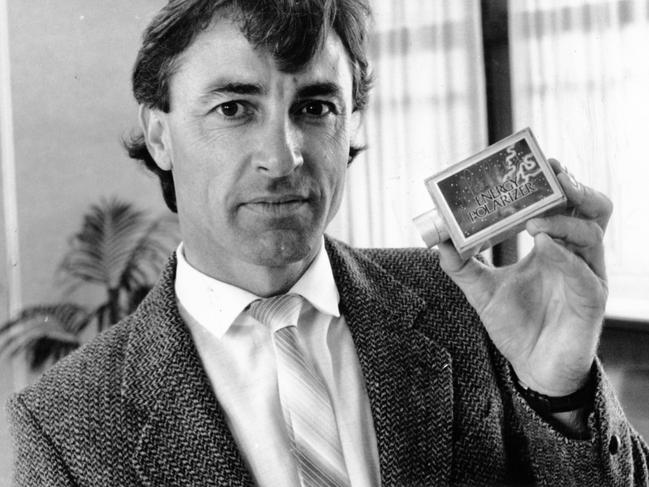
Holden banned Brock from fitting the devices to its cars, but he insisted on doing so.
When Brock and Holden divorced on February 20, 1987, it was front page news.
Holden said “the company was given no choice but to dissociate itself from future HDT products”, and it set about creating a new line of rapid road cars.
The car we now know as the “Walkinshaw” was the first of them.
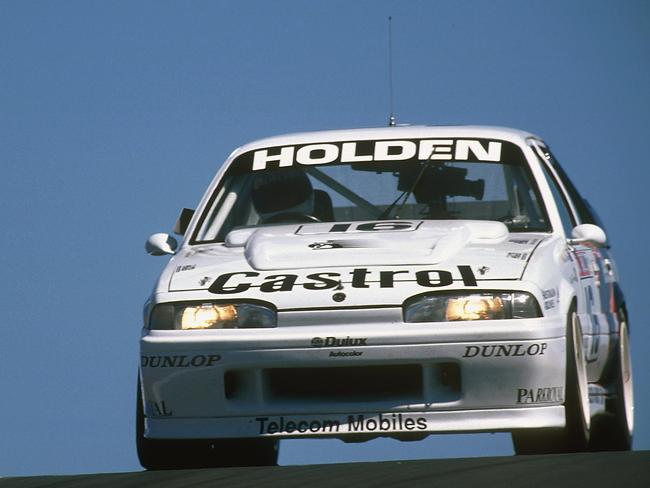
LISTEN TO EPISODES 1-15 OF THE PODCAST BELOW:
What was the genesis of the design?
The “Group A” part in the Walkinshaw’s name reflects its link to a specific class of motorsport that contested high-profile races such as the Bathurst 1000.
At the time, manufacturers had to build at least 500 production examples of any car they wanted to race at Bathurst. Holden asked top racers to pitch their vision for a high-performance road car that could be the basis for its racing machines, and picked Scotland’s Tom Walkinshaw for the job.
Legend has it that the late Walkinshaw sketched out his idea to expose loopholes in the racing rule book with a radical bodykit intended to give Holden an aerodynamic advantage at top speed.
McLaren F1 designer Peter Stevens helped shape 21 fibreglass parts that gave the car its iconic look – and helped it win at Mount Panorama.
What were the car’s specs?
Powered by an upgraded 4.9-litre V8 engine with twin throttle bodies, the car sent 178kW of power to the road through special Bridgestone RE-71 tyres.
Why were they blue in colour?
The Walkinshaw was only made in one colour, a delicately tinted tone named Panorama Silver that was not offered on other vehicles at the time.
Limiting the model to a single colour simplified the production process for a new outfit struggling to scale up production with an experimental design. Many of the components had to be hand-finished and carefully crafted in order to fit the cars, and Holden had to meet strict deadlines to build 500 production examples in order to go racing with the car.
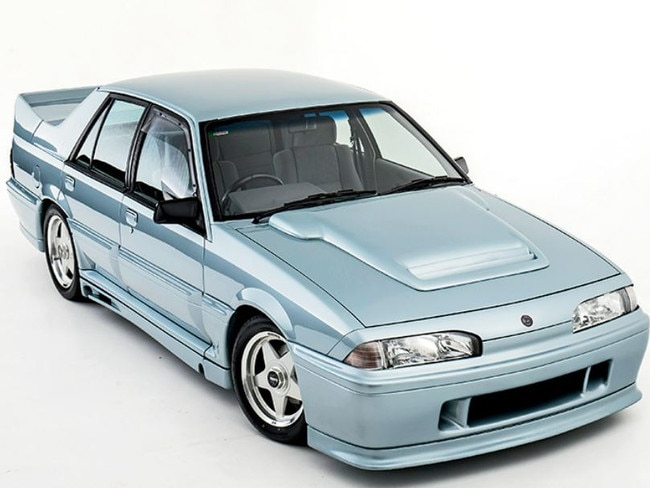
How many Walkinshaws were made?
HSV had to build 500 examples of the car to make it to the grid at Bathurst. When those sold out, they added another 250 to the production run for a total of 750 cars. That said, there are more than a few replicas getting around – regular Holden Commodores wearing the Walky’s bodywork and a coat of Panorama Silver paint.
How could Holden owners copy the Walkinshaw’s look?
There are businesses that specialise in “body kits” that transform the look of regular models into “hero” cars. These have been around for a long time, and were a relatively popular upgrade for Holden enthusiasts. A fibreglass replica Walkinshaw body kit costs about $5000 plus paint and fitment costs today.
How much are Walkinshaws worth?
Originally sold for $45,000, Walky prices have been on a rollercoaster ride for more than 30 years. Muscle Car Stables founder Chester Fernando has bought and sold a handful, saying that “for the first 14 or 15 years the values just dropped away – I’ve heard of cars changing hands back in the early 2000s for as little as $15,000 or $16,000”.
“And then at the time Peter Brock passed away, the Commodore started punching up in price all of a sudden – $60,000, $70,000, $100,000 was being paid for low kilometre examples,” he said.
“And since then they’ve just kept climbing.”
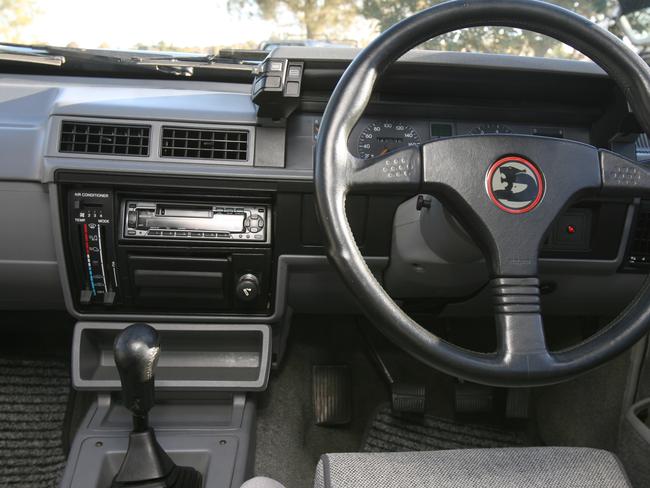
Public auction results for the “Walky” include $221,000 with Collecting Cars in 2023, and $340,000 with Burns and Co. in 2018.
Other owners have asked for up to $1 million.
Mr Fernando owns the first of 750 built and plans to sell this car this year for a price yet to be determined.
“And then at the time Peter Brock passed away, the Commodore started punching up in price all of a sudden – $60,000, $70,000, $100,000 was being paid for low kilometre examples.
What is the last road version of the Walkinshaw?
The final Walkinshaw, number 750, was built in September 1988 and sold to Bathurst racer Bob Forbes, who kept it as an investment. That car is currently listed for sale online at StagAuto.com, for an undisclosed price.
Was the Walkinshaw Holden’s most famous model?
No list of Holden’s most important muscle cars would be complete without the Walkinshaw – it’s the first HSV, and the first car to bring victory at Bathurst to the newly-formed Holden Racing Team.
The car’s racing pedigree, wild looks and fascinating history make it one of the most famous Holdens, though owners of other icons such as the Torana and Monaro might argue their cars are more famous.
For more information about our investigation, visit dearachelle.com.au
If you have any tips or confidential information, please contact investigative journalist Ashlea Hansen at dearrachelle@news.com.au.
You can also join our Dear Rachelle podcast Facebook group.
Originally published as What is a Walkinshaw: Rare car key to Rachelle Childs’ murder case explained



